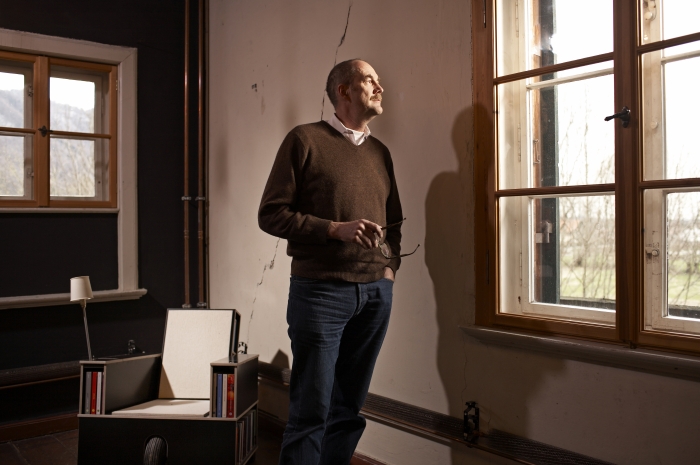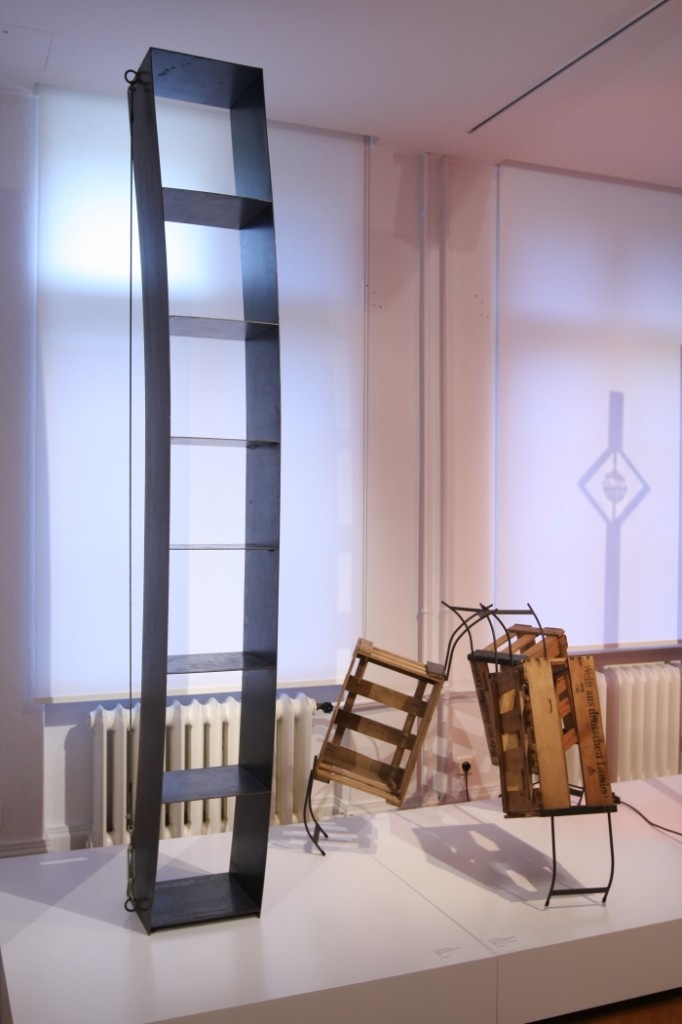In our post from the exhibition Schrill Bizarr Brachial. Das Neue Deutsche Design der 80er Jahre at the Bröhan Museum Berlin we noted that, for us, the two most important legacies of the Neues deutsches Design movement and 1980s German Postmodernism are and were the number of protagonists from then currently teaching at German design schools, and those manufacturers who arose from the heady, damp haze of the period. Manufacturers such as Nils Holger Moormann.
Established in the early 1980s from the youthful design experiences of the bored but otherwise upstanding law student Nils Holger Moormann, the eponymous company has evolved over the past three decades to establish itself as one of Europe's most interesting and challenging contemporary furniture producers.
At the 2015 Ambiente interiors fair Nils Holger Moormann will be awarded the "Personality" lifetime achievement award by the Rat für Formgebung - the German Design Council. Much as we have an innate mistrust of design awards, and for all of lifetime achievement awards for the living and lively, the combination of the award and the exhibition offer the perfect excuse to speak with Nils Holger Moormann about furniture design and the furniture industry then, now and in the future, but we began by asking how he found his way to furniture design......
Nils Holger Moormann: Pure chance. I'd studied law for 8 semesters, wasn't really enjoying it and then, and as so often happens, through chance and acquaintances I was introduced to this world of contemporary design, and was immediately enthralled. There were terrible things, fantastic things, high-tech creations, Bauhaus and more traditional furniture mixed with objects which had been completely ripped out of context, and I found that all absolutely fascinating. I didn't really understand any of it, but the spirit of adventure and freedom allowed even those without a relevant academic or professional background to get involved and simply through learning by doing to find your own way.
smow blog: And were you aware of what one could call a "scene", or how did you experience the situation?
Nils Holger Moormann: I wasn't aware of a scene as such. It was a relatively small, informal community, and one simply drifted through it. You met people, were subsequently invited somewhere, were introduced to new people, heard that they were doing this or that and from that work learned of other designers. For me it was like a huge festival with a 1000 surprises, everything was possible, you were puzzled, dumbfounded, surprised, didn't understand; one was simply aware of being part of something new and invigorating.
smow blog: Does the fact that you found your way to design via Neues deutsches Design mean you had no interest in the more functional design, for example the so-called gute Form, that up until then had largely dominated German design?
Nils Holger Moormann: No, no not all. For me this Neues deutsches Design was wonderfully shrill and bizarre and one was aware of celebrating a revolution; but what principally interested me was a reduced design that had an added value, a design which contained an idea, an idea that caught my imagination. And much as I would often fall in love with shrill and wacky objects, I was only a true proponent of the more reserved design objects
smow blog: And were you designing yourself in those days?
Nils Holger Moormann: Initially no, I set myself up more as a sales rep, and would travel through Germany and Europe meeting designers and architects who were producing their own designs and would take on the distribution for them; the idea was to become similar to a publisher for extraordinary books.
smow blog: The only object from that period still in production with yourselves is the Gespanntes Regal from Wolfgang Laubersheimer, is that the only "extraordinary" book that has survived the ravages of time, or perhaps better put, why has it survived the ravages of time?
Nils Holger Moormann: When one looks back to that period the Gespanntes Regal is in general one of only very few pieces that are still in production. The Gespanntes Regal is one of those pieces that fascinated me from the first moment I saw it: an unstable construction that can't support itself but which then receives its tension, stability and functionality from a simple steel cable, and it is a piece that not only remains as fresh and relevant for me today as back then but is an object which still stands for our philosophy.
smow blog: Which of course poses the obvious next question, is there anything from the spirit of then to be found in the contemporary German furniture industry?
Nils Holger Moormann: Unfortunately not. It was a protest and a revolution and an attempt to forge something new, but that is history and now we have a situation where we're largely driven by industry; many of the current manufactures don't even have owners but rather are part of larger concerns, exist in effect simply to generate profit, and the result is the furniture that is being offered all looks the same. Everything has become very homogeneous, so much so that sometimes I have the feeling that if you were to go to IMM Cologne at night and mix up the furniture, take pieces from one stand and place them on another, hardly anyone would notice. And that is a shame because it means the esprit, the curiosity, the aspiration is missing. Sometimes I have the feeling that the only passion that is there is to make sellable products, and that's not the the way forward. Yes you have got to have the luck to make a profit and remain financially stable, but you also need to search for new ideas and new approaches and for me that currently occurs too infrequently. For me there is too little protest, too few attempts to try something new, even when you know that it might not work, to at least try. In my opinion we desperately need a new revolution!
smow blog: Need, but will we get?
Nils Holger Moormann: I'm of a naturally positive disposition and I believe that it will come. Not least because the young designers today must increasingly take everything into their own hands and so will be forced to find new ways, new solutions and new systems. And much like in the 1980s through that searching will come the changes.
smow blog: We sense however the spirit of then still forms a key part of who you are and how you operate?
Nils Holger Moormann: Yes, Gott sei dank! The moment the youthful searching, the curiosity and the passion stops that's the moment you become pragmatic and start to optimise things on a purely economic level. But before the financial must always come the exploration, the esprit and the passion.

